1st Symposium Redes Fantasma
The Redes Fantasma is a symposium about lost marine trawls, to mark and to try to recover them held in Peniche (Portugal) on March 20th 2025. It was organized by the Rotary Club Atlantico Região Oeste D1960 with collaboration in the organization of NGO Ocean Patrol.
Our Ph D student Davide Bonomo was participating with an speak about Side Scan Sonar.
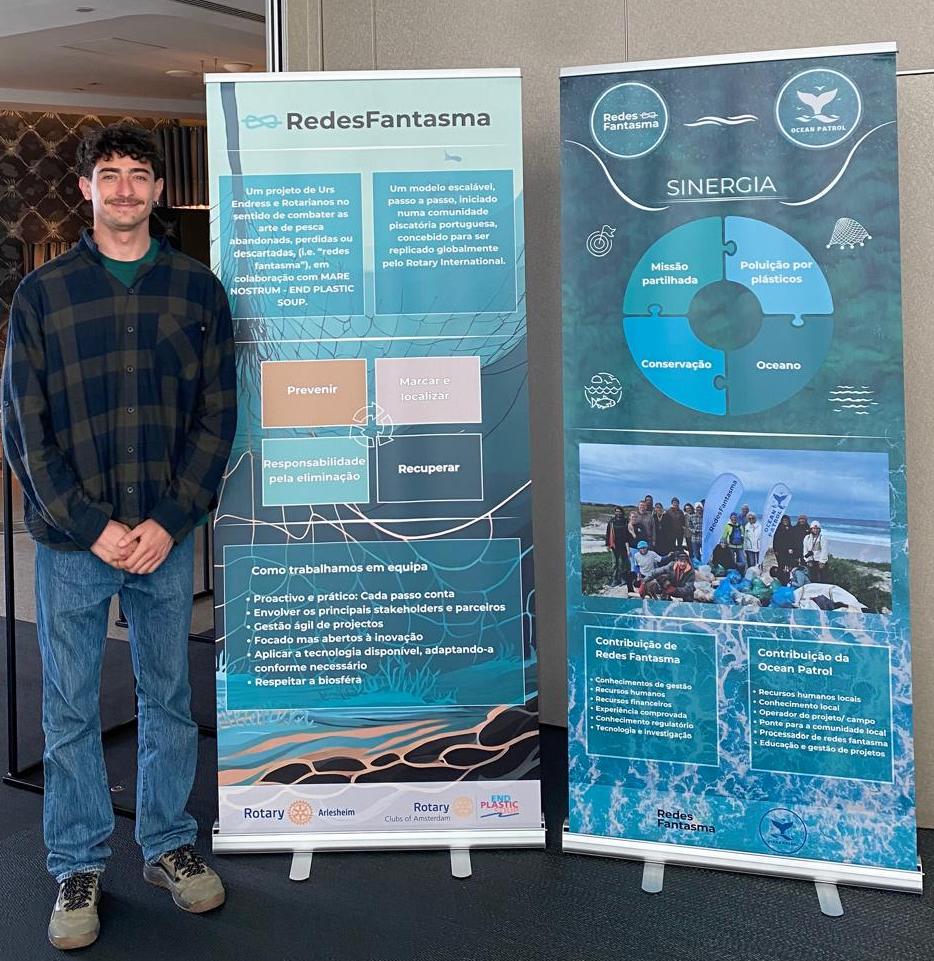
Side Scan Sonar Study of the Morro de Toix Seacliff base (Calpe, Alicante)
The Morro de Toix seacliff, located South of Calpe, on the Alicante coast in southeastern Spain, is a 70 to 30 m high seacliff. The western portion is plane and eastern portion of the seacliff is highly karstified and overhanging. The foot is currently submerged. An USV (Unmanned Surface Vessel) platform adapted to be towed by a manned vehicle, a paddle surfboard, has been used, with the aim of studying the geomorphology of the underwater part. To study the submerged bottom of the cliff, an USV (Unmmaned Surface Vessel) platform has been used. It has been adapted to be towed by a crewed vehicle, a paddle surfboard. This is an easy and fast procedure when a short excellent weather conditions windows is found obtaining good side scan sonar, single beam and downscan data. The result of the processed data has shown a metric-blocky seabed near the cliff and the underwater cliff is excavated around 3-4 m in the western portion and irregulary excavated in the eastern part with many cove and caves.

cite as: Bonomo, D., Ronda, J. L., Benabdeloued, B. Y. N., Tent-Manclús, J. E., Salcedo-Justicia, E. M. y Alcántara-Carrió, J. (2024): Estudio con sonar de barrido lateral de la base del acantilado del Morro de Toix (Calpe, Alicante). In: Palomar Vazquez, J. y Pardo Pascual, J. (Eds.). GEOLIT24 – Libro de Actas – XII Jornadas de Geomorfología Litoral. 25-27 de septiembre de 2024. Valencia. 254-259. https://doi.org/10.4995/GEOLIT24.2024.18726
University students in Monsul (Almeria)
Students of the third course of Marine sciences of the Alicante University visit the Monsul beach on October 30th of 2024.
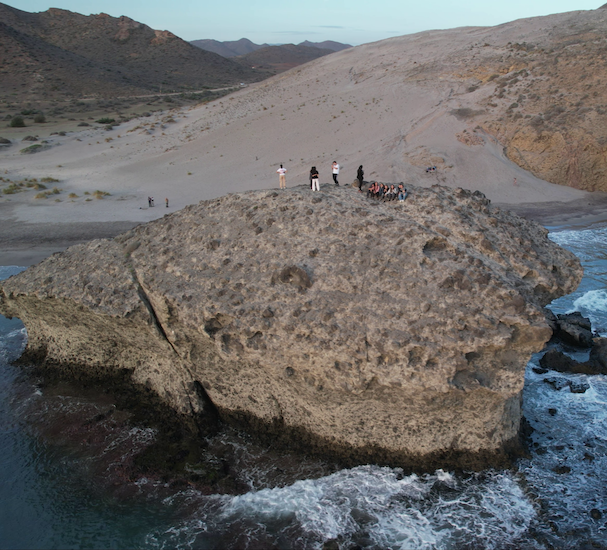
The drone picture show the student in Monsul (Almeria).
The professors of the subject were Manuel Martín-Martín, David Bonomo, and José Enrique Tent-Manclús.
IX International Symposium on Marine Sciences (Valencia).
Our thinkinazul project Molico-CV presented four works at the XII Jornadas de Geomorfologia Litoral held in Valencia (Spain) from September 25 to 27, 2024.
- Morphometric analysis of the Alicante coast.
- The Ifach Rock and the coast between Calpe and Moraira.
- Side Scan Sonar in Morro de Toix (Calpe).
- The notch in Morro de Toix (Calpe).
Works presented to the IX International Symposium on Marine Sciences (Valencia):
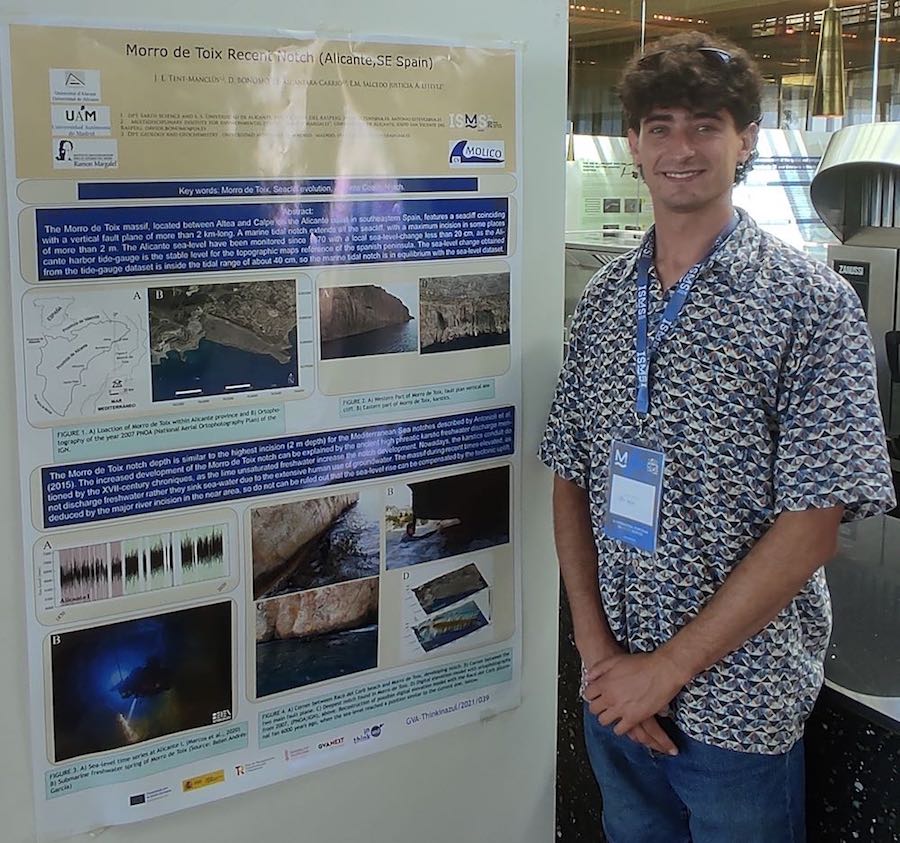
- Benabdeloued, B. Y. N., Ronda, J. L., Tent-Manclús, J. E., Bonomo, D. y Alcántara-Carrió, J. (2024): Coastal studies with an USV. IX International Symposium on Marine Sciences (Valencia). 1083 Poster
- Alcántara-Carrió, J., Fontán-Bouzas, A., Bonomo, D. y Tent-Manclús, J.E. (2024): Geomorphological análisis of the inner continental shelf of the Prebetic system (southeast Iberian Peninsula). IX International Symposium on Marine Sciences (Valencia). 1089 Poster
- Tent-Manclús, J. E., Bonomo, D., Alcántara-Carrió, J., Salcedo-Justicia, E. M. y Estévez, A. (2024): Morro de Toix recent notch (Alicante, SE Spain). IX International Symposium on Marine Sciences (Valencia). 1092 Poster
- Bonomo, D., Tent-Manclús, J. E., Alcántara-Carrió, Portantiolo Manzolli, R., Jordá Guijarro, J., Arteaga Cardineau, J., Navarro Pedreño, J., Jordan, M. y Narváez, C. R. (2024): Record of a high energy event in the coastal plain of Guardamar de Segura (Alicante, SE Spain). IX International Symposium on Marine Sciences (Valencia). 1094 Poster
XII Geolit Congress (Valencia)
Our thinkinazul project Molico-CV presented four works at the XII Jornadas de Geomorfologia Litoral held in Valencia (Spain) from September 25 to 27, 2024.
- Morphometric analysis of the Alicante coast.
- The Ifach Rock and the coast between Calpe and Moraira.
- Side Scan Sonar in Morro de Toix (Calpe).
- The notch in Morro de Toix (Calpe).

Works presented to the XII Jornadas de Geomorfología Litoral:
- Alcántara Carrió, J., Tent Manclús, J. E., Bonomo, D., Fontán Bouzas, A., Portz, L. y Manzolli, R. (2024): High-resolution morphometric analysis of the rocky coast of the Prebetic System (southeast Iberian Peninsula). In: Palomar Vazquez, J. y Pardo Pascual, J. (Eds.). GEOLIT24 – Libro de Actas – XII Jornadas de Geomorfología Litoral. 25-27 de septiembre de 2024. Valencia. 214-220. https://doi.org/10.4995/GEOLIT24.2024.18736
- Alcántara Carrió, J., Tent Manclús, J. E., Bonomo, D., Fontán Bouzas, A., Portz, L. y Manzolli, R. (2024): The Pleistocene double tombolo of Calpe and the submerged fault scarps between Moraria Point and Ifach Rock (southeast Iberian Peninsula). In: Palomar Vazquez, J. y Pardo Pascual, J. (Eds.). GEOLIT24 – Libro de Actas – XII Jornadas de Geomorfología Litoral. 25-27 de septiembre de 2024. Valencia. 221-227. https://doi.org/10.4995/GEOLIT24.2024.18864.
- Bonomo, D., Ronda, J. L., Benabdeloued, B. Y. N., Tent-Manclús, J. E., Salcedo-Justicia, E. M. y Alcántara-Carrió, J. (2024): Estudio con sonar de barrido lateral de la base del acantilado del Morro de Toix (Calpe, Alicante). In: Palomar Vazquez, J. y Pardo Pascual, J. (Eds.). GEOLIT24 – Libro de Actas – XII Jornadas de Geomorfología Litoral. 25-27 de septiembre de 2024. Valencia. 254-259. https://doi.org/10.4995/GEOLIT24.2024.18726.
- Tent-Manclús, J. E., Bonomo, D., Alcántara-Carrió, J. y Salcedo-Justicia, E. M. (2024): Evolución reciente del notch del acantilado marino del Morro de Toix (Alicante, SE España). In: Palomar Vazquez, J. y Pardo Pascual, J. (Eds.). GEOLIT24 – Libro de Actas – XII Jornadas de Geomorfología Litoral. 25-27 de septiembre de 2024. 318-323. Valencia. https://doi.org/10.4995/GEOLIT24.2024.18729
Nannoplankton Congress (INA 19) in Llandudno (Wales)
The 19 International Nannoplankton Association Congress took place on the coastal city of Llandudno (Wales) from September 9 until 13, 2024.
The Ceratoliths are a type of calcareous nannoplankton which allow to subdivided the Messinian and the Pliocene stages. A series of works by Carlos Lancis, José Enrique Tent-Manclús and José-Abel Flores, comparing Light Microscope and Scan Electronic Microscope image, have redefined the Messinian and Pliocene Ceratolithaceae Family and its unrevail its phylogenetic evolution.

Three works published in the Journal of Nannoplankton Research (JNR) abstract volume (here):
- Lancis, C., Tent-Manclús, J. E. y Flores, J.-A. (2024): Ceratolithaceae biostratigraphy of ODP Hole 999A, Caribbean Sea. Journal of Nannoplankton Research, 42-special: 71.
- Lancis, C., Tent-Manclús, J. E. y Flores, J.-A. (2024): Ceratolithaceae biostratigraphy of ODP Site 1237, equatorial Pacific. Journal of Nannoplankton Research, 42-special: 72.
- Lancis, C., Tent-Manclús, J. E. y Flores, J.-A. (2024): Structural developments within the Family Ceratolithaceae. Journal of Nannoplankton Research, 42-special: 73.
Spanish Geological Congress in Avila
Our thinkinazul project Molico-CV presented three presentations at the XI Spanish Geological Congress held in Ávila (Spain) from July 1 to 6, 2024.
- A high energy event in the last 2000 years at Guardamar de Segura.
- The Seacliff of Morro de Toix (Alicante)
- The development of a homemade USV (Uncrewed Surface Vehicle). See the picture bellow.
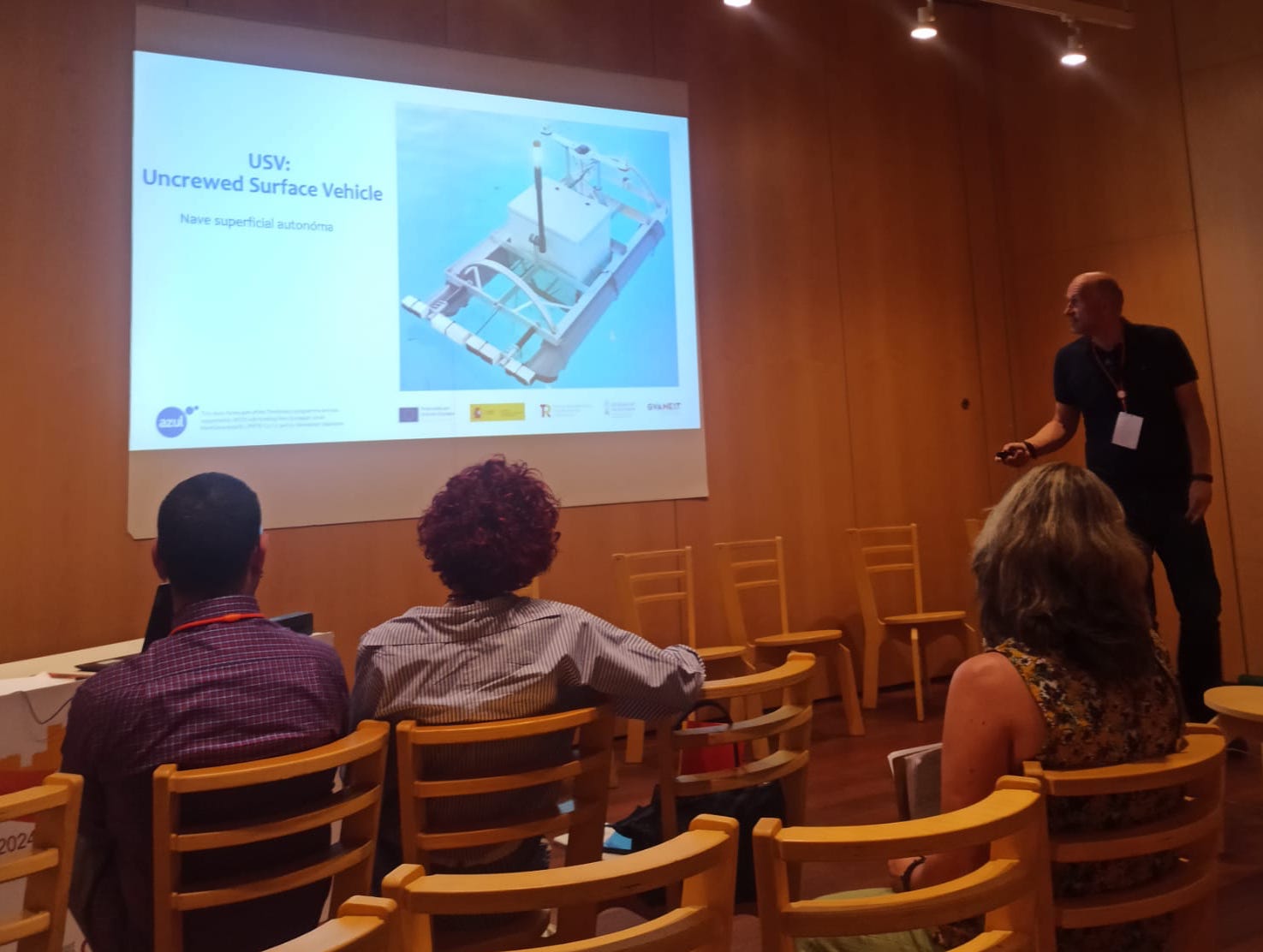
Works presented to the XI Spanish Geological Congress:
- Benabdeloued, B. Y. N., Ronda, J. L., Tent-Manclús, J. E., Bonomo, D. y Alcántara-Carrió, J. (2024): Desarrollo de un USV para trabajos costeros. Geotemas, 20: 46.
- Bonomo, D., Tent-Manclús, J. E., Alcántara-Carrió, J., Portantiolo Manzolli, R., Jordá Guijarro, J., Arteaga Cardineau, C., Navarro Pedreño, J., Jordan, M., y Narváez, C. R. (2024): Registro de un evento de alta energía en la planicie costera de Guardamar de Segura (Alicante, SE España). Geotemas, 20: 1132-1135.
- Tent-Manclús, J. E., Bonomo, D., Alcántara-Carrió, J. y Estévez, A. (2024): Evolución reciente del acantilado marino del Morro de Toix (Alicante, SE España). Geotemas, 20: 89-92.
Alicante 2024 Thinkinazul meeting
Last june 11th to 13th 2024 in the Universidad de Alicante facilities took place the third meeting of the of the Valencian Comunity Thinkinazul project.
The meeting was in the Alfredo Orts degrees room. Below a picture of some of the attendents.
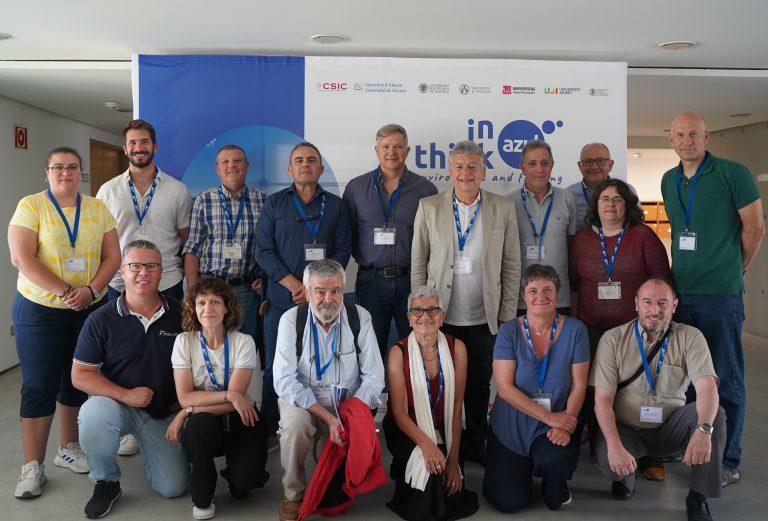
ROV driving experience
Students in the third year of the Geology Degree of the course “Geophysics and geophysical prospecting”, under the supervision of Professor José Enrique Tent Manclús, carried out practices in the University of Alicante Ducks pond to learn how to drive a ROV. The picture show some students trying to understand the ROV commands (left).

marine geophysics on board a ship
Last February 15th, 2023, students in the third year of the Geology Degree of the course “Geophysics and geophysical prospecting”, under the supervision of Professor José Enrique Tent Manclús, carried out practices aboard the “Rosa de Abril” boat from the Alicante harbor. The practice was show a Boomer High resolution reflexion equipment and a ROV. The picture show a student trying to understand the ROV commands.


Recent Comments